Playing with fq_codel in 2.4
-
Hi, I have a problem, if after enabling the limiter I start to download a game that saturates the band and in the meantime I perform a ping, the ping increases from 10 ms to 50 ms.
Here are the screenshots of the settings, my bandwidth is 120/20.
Should I change something?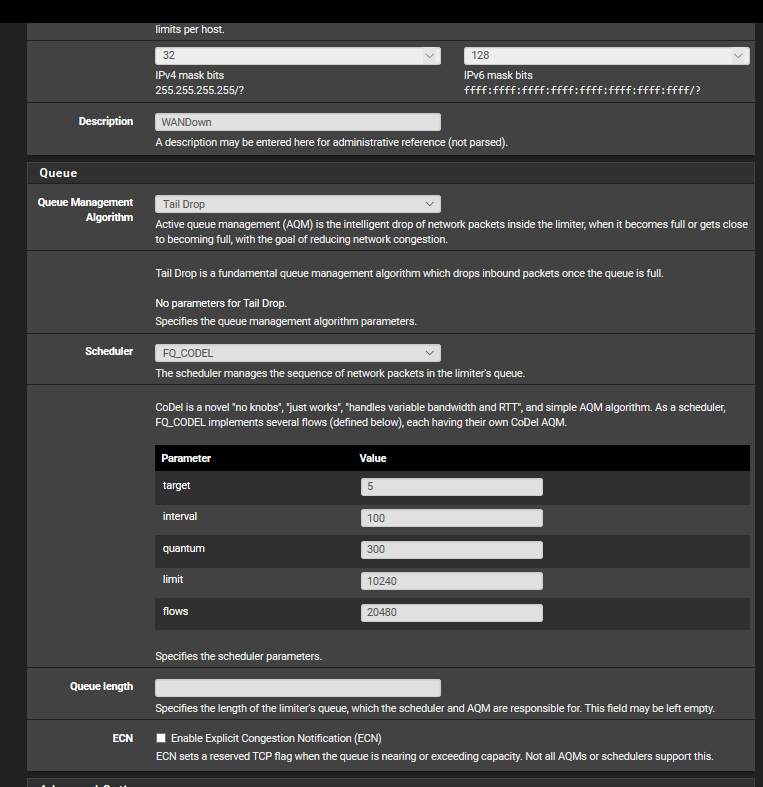 spoiler
spoiler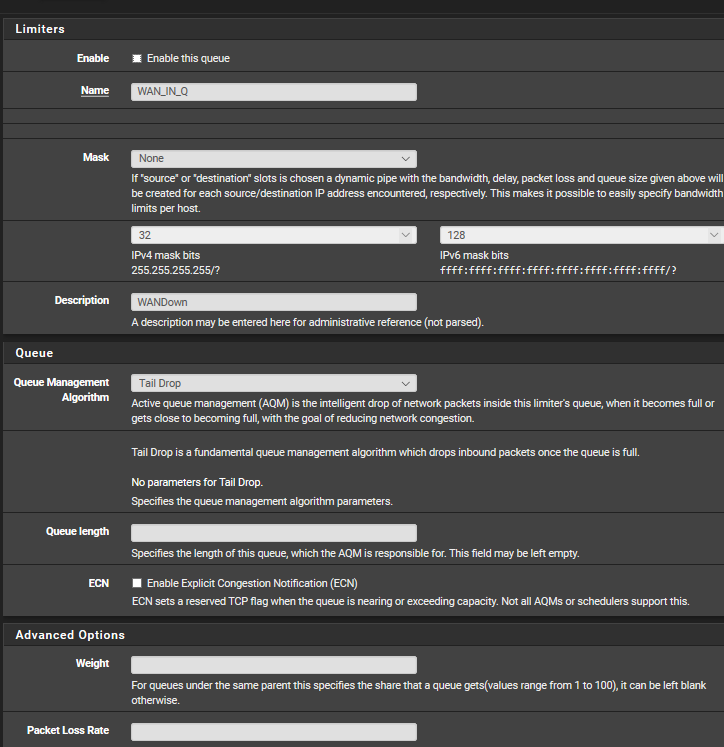 spoiler
spoiler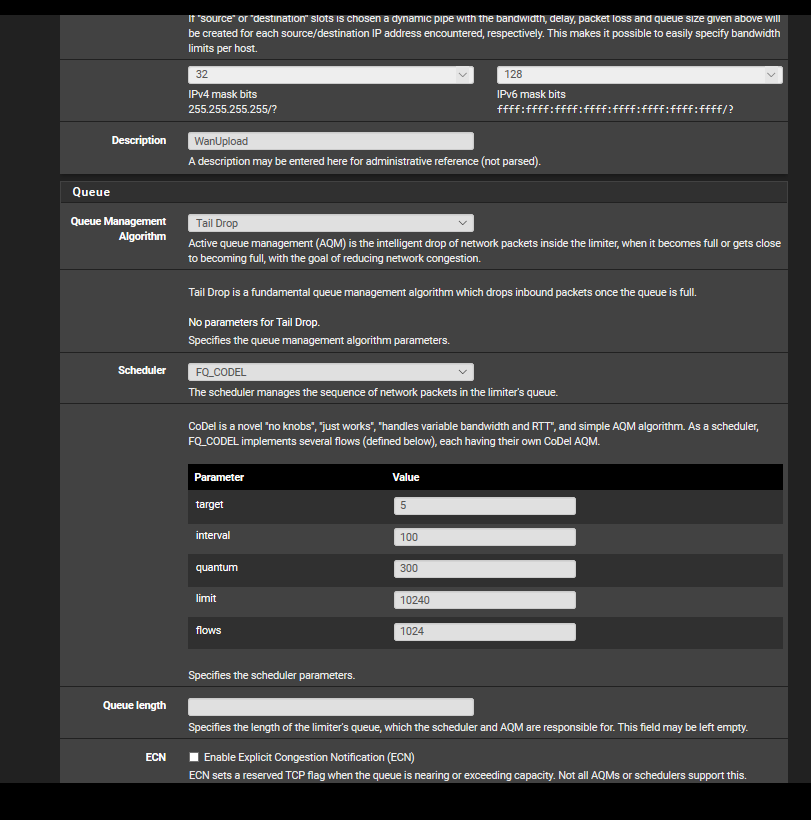
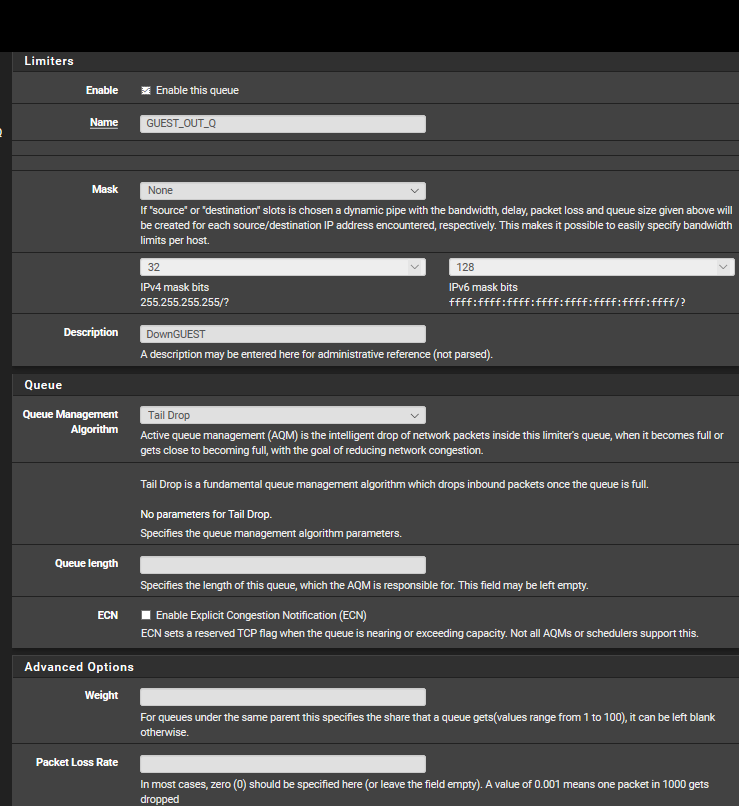
-
@mikekoke Sorry my English, I play without problems with these settings, stable ping + or - 2ms of variation.
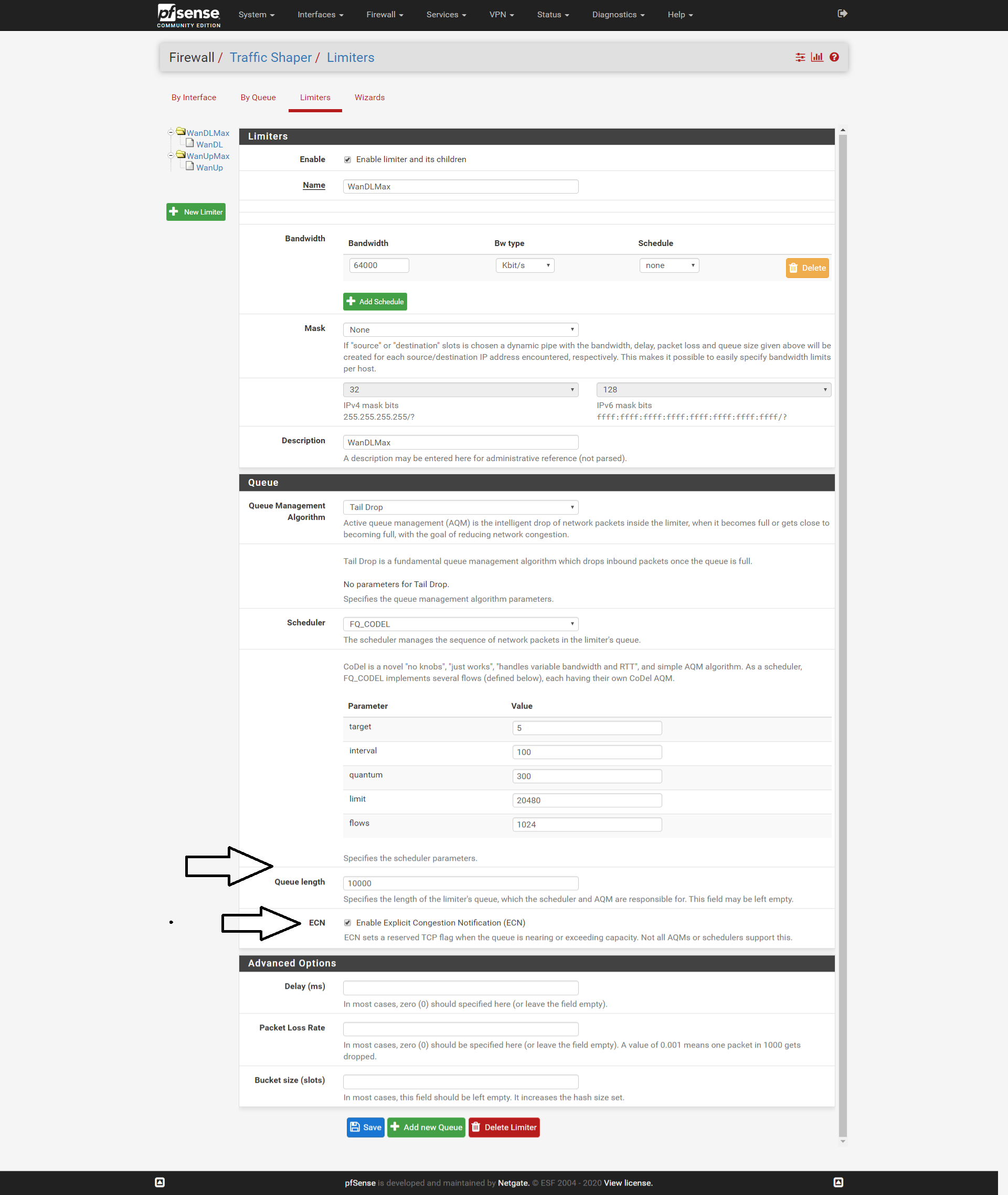
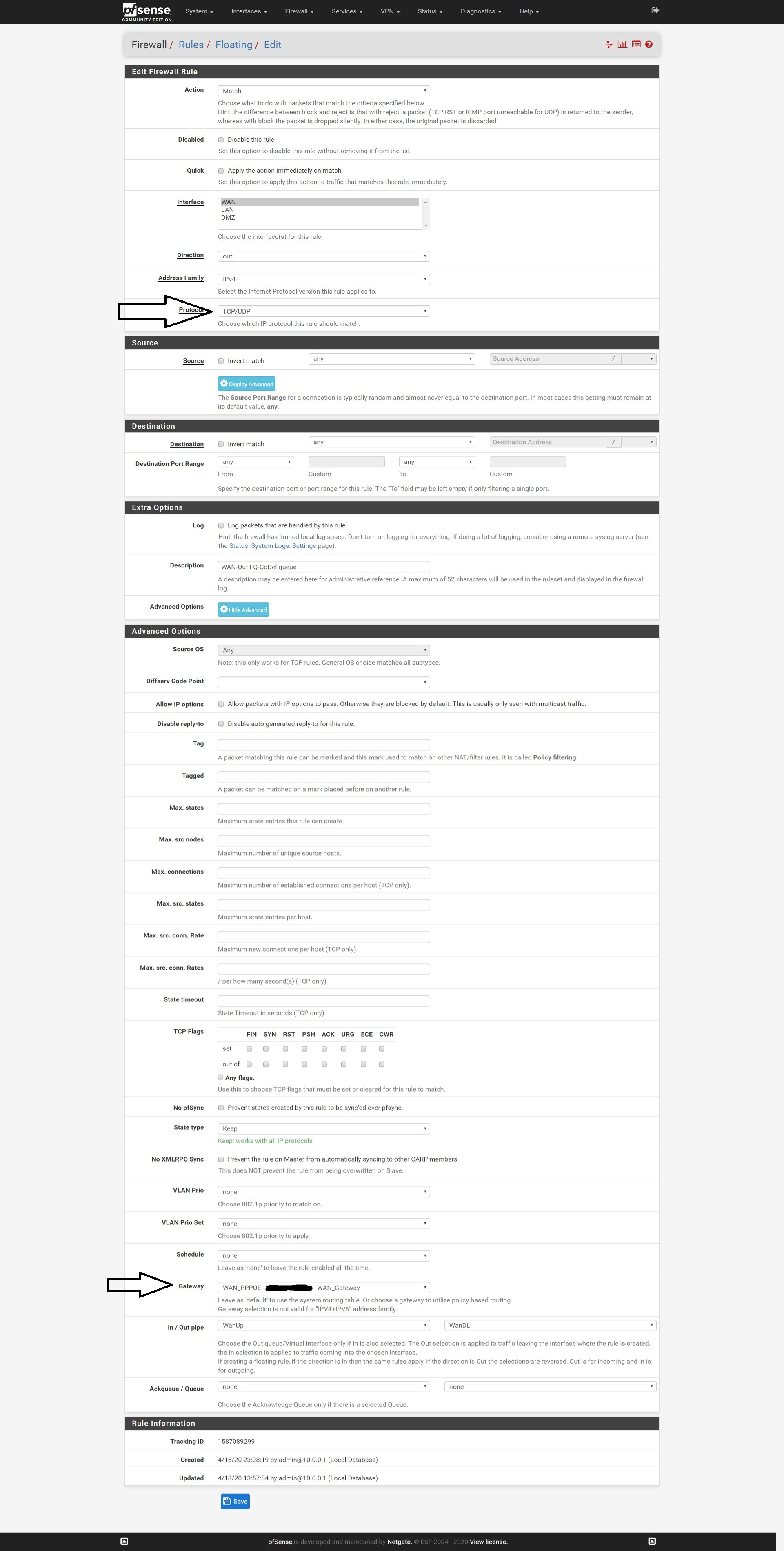
-
@mikekoke My result
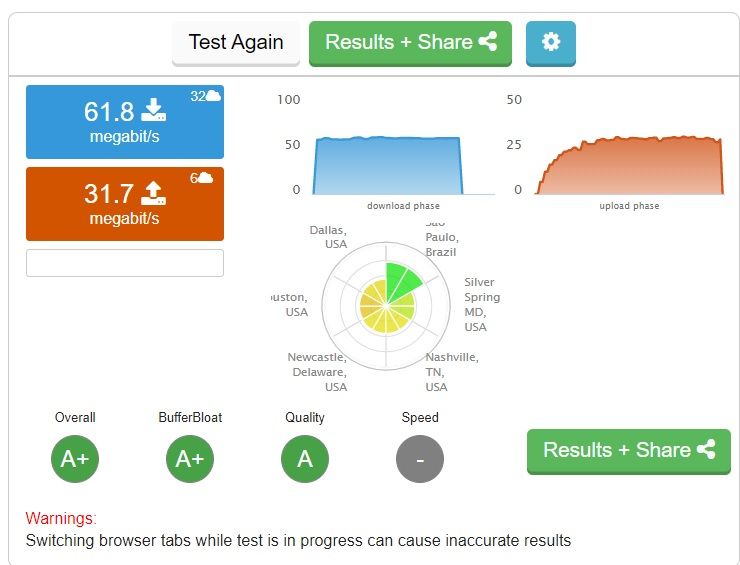
-
Hi, thanks for the reply, but i have already tried to enable those two settings and the result does not change.
By doing the test on dslreports with the configuration shown in the screenshots i get three A + but if i download a game and at the same time i ping 8.8.8.8 the latency increases from 10 to 50 ms. -
@mikekoke I did the download test and I didn't have this problem.

-
When I did my tests I ran multiple downloads simultaneously to saturate the band.
-
@mikekoke Mystery.
-
when you say "downloading a game" do you mean, steam? Steam really abuses the network, opening 10 or more full rate flows, and even with cake, it's hard to beat them down.
-
Yes, Steam.
I'll try doing normal downloads.
Would the best settings be Tail Drop, FQ_Codel, Queue length at 10000 and ECN both on download and on upload or only on download? I read that the ECN annoys the upload.
The Queues of both on Tail Drop but without ECN and Queue length?
Sorry for the questions but I have read the discussion and there are many opinions on the matter. -
Does it still give the same issue when you reduce the headline bandwidth you have set in the limiters?
-
Yes, even if the bandwidth is reduced, the ping increases the same.
-
This post is deleted! -
@mikekoke Follow this tutorial that works great!
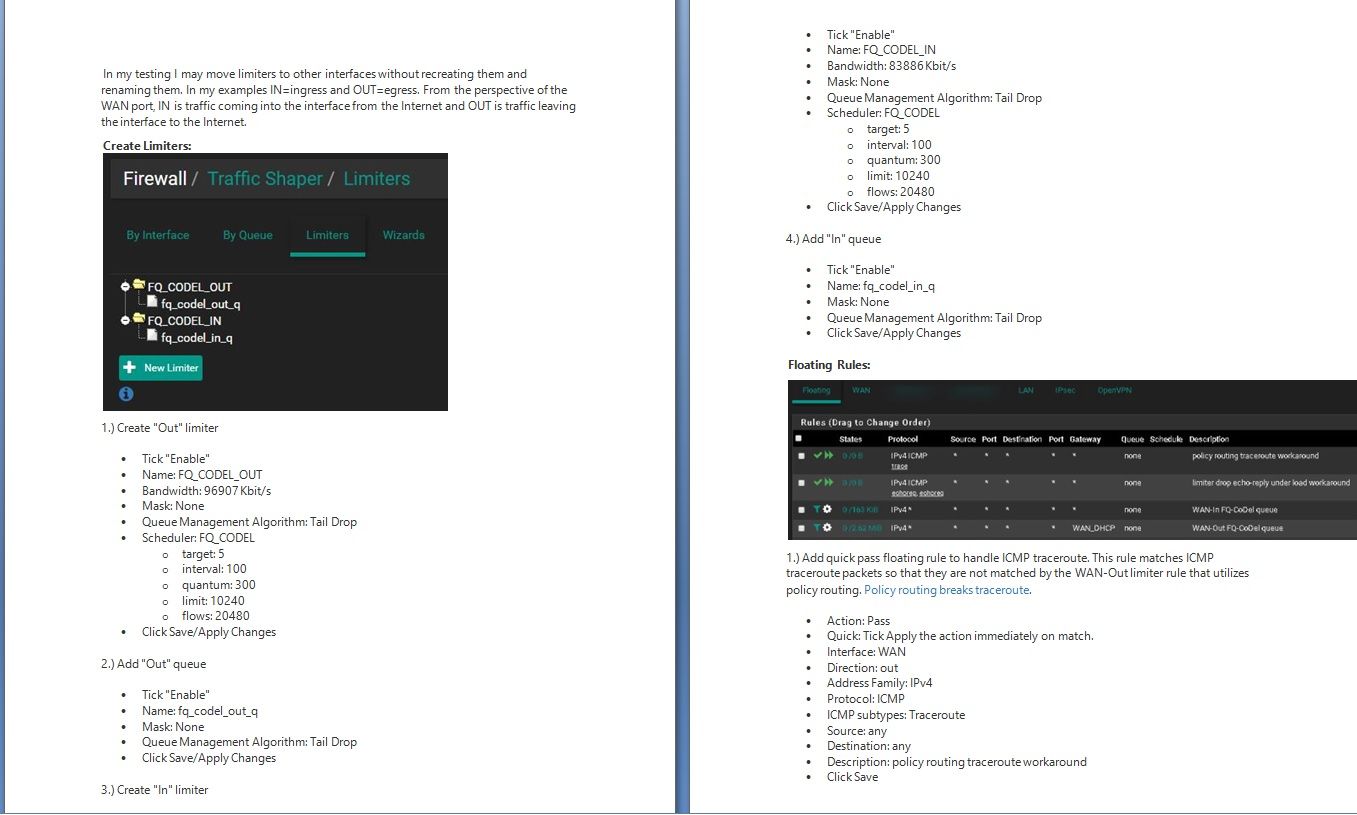
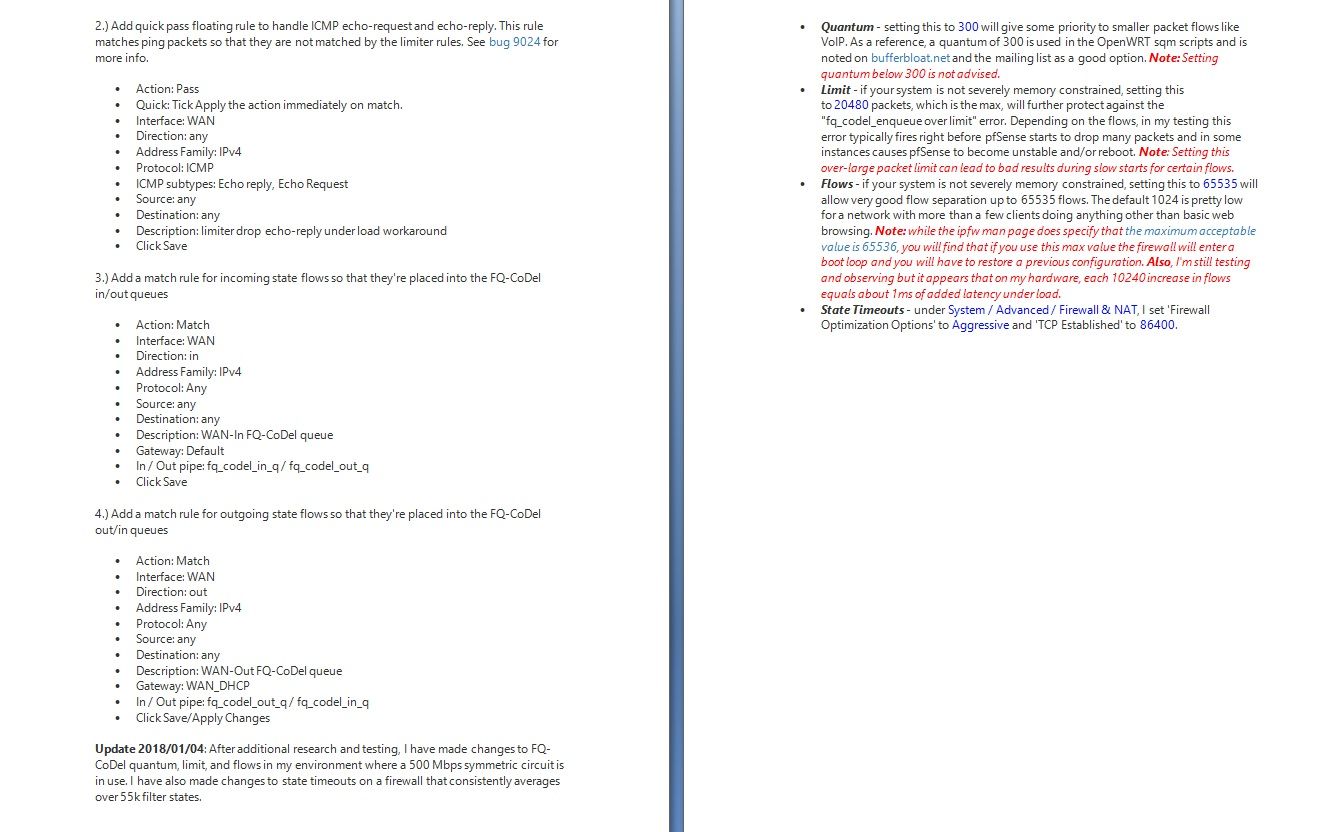
-
Have you tried changing the quantum to < 536 or 300?, I have had better success at these packet size quantums.
Albeit TCP suffers a bit with a 300 quantum.Also had more success with fq_pie with 300 quantum.
@ dev - fq_pie needs an area in the gui to change the quantum ,pls .
I also run fq_pie lan parents for voip and gaming with greater weights given to the udp in addition to the wan
pipes.I still cant figure out why pfsense wont perform as well with udp packets as a linux router does with QOS/cake on
without quantum changes ?.Edit ;
In testing I have found layer 3 tunnel,gre or openvpn works much better and avoids the tcp overhead,you wont notice as much fluctuation,even with the wan pipes setup as standard for voip and udp games.During full saturation of the pipe the voip and game jitter hardly varies from a no tcp load scenario. This shoudlnt have to be done but works better than cake,pie or fq_codel.Note ;If you try the openvpn method you will need to change the nat and firewall rules for udp to point through the vpn gateway.
-
Assume that I've correctly implemented everything in @uptownVagrant's post #815. It works (splendidly). Thanks for the good instructions, man.
Then, because I have a second physical WAN interface and public IP for my captive portal (working perfectly for several months), let's say I do everything again in parallel - unique limiters, unique queues, and unique rules #3 & 4, setting rule #4's gateway to the captive portal WAN interface.
The LAN still works, but when tested, the captive portal won't do more than 1/4 of the available upload bandwidth.
Anyone feel like helping a brother out with a W.A.G. as to why this might be happening?
-
Thank you so much to everyone in this thread who has helped in testing, and especially to @uptownVagrant for putting in as much time as they have to help the all of us. This has been working well on my network and I'm very much appreciate this massive thread.
I would like to take this one step further and tie this into bandwidth limits for certain VLAN's of mine. Specifically, I'd like to limit bandwidth in both my IoT network and my guest network.
In an ideal scenario, this FQ CoDel rule would cover the entire WAN interface including the Guest and IoT VLAN (which it already does), but then I can set a second child limiter that only limits the bandwidth for specific interfaces. This way there's a single up queue and a single down queue for the entire WAN, but certain VLAN's have an additional restriction on their bandwidth.
What would be the best way to have a single queue as discussed here, but also have bandwidth limits on specific interfaces/VLAN's?
-
Ive noticed my internally hosted services (matrix synapse, seafile etc) that sit behind Traffic reverse proxy have stopped working since implementing traffic shaping as per the recommendations in this thread.
I narrowed the cause down to the application of queues to my inbound WAN port forwards
Clients connecting inbound via Cloudflare report a '522' error (unable to reach the origin web server and the request times out).
I've checked the in/out limiters are applied to the relevant in/out pipe and they appear correct, as in a mirror of the regular outbound rules on internal subnets
The only noticeable difference is my firewall rule is applied on the WAN interface, not the floating rules as per @uptownVagrant
Would be happy to receive guidance on how to debug this issue.EDIT: With no limiters applied I see traffic hitting my Traefik proxy
176.126.xxx.xxx - - [28/May/2020:14:07:06 +0000] "PUT /_matrix/federation/v1/send/159066 HTTP/1.1" 200 12 "-" "-" 33895 "matrix@file" "http://192.168.90.20:80" 19mswith limiters applied, these accesses aren't visible so it appears that pfSense isn't actually forwarding the request.
-
Following the steps below I have a question!
- Whats the difference between Queue Management Algorithm = Tail Drop vs CoDel?
- Even though on the limiter with "Tail Drop" its allowed to have active ECN. On the queue with Tail Drop its not allowed to use ECN. Is generally Tail Drop better? With or without ENC? I could not find anything in the pfsense book.
Thanks!
1.) Create "Out" limiter Tick "Enable" Name: FQ_CODEL_OUT Bandwidth: 96907 Kbit/s Mask: None Queue Management Algorithm: Tail Drop Scheduler: FQ_CODEL target: 5 interval: 100 quantum: 300 limit: 10240 flows: 20480 Click Save/Apply Changes 2.) Add "Out" queue Tick "Enable" Name: fq_codel_out_q Mask: None Queue Management Algorithm: Tail Drop Click Save/Apply Changes 3.) Create "In" limiter Tick "Enable" Name: FQ_CODEL_IN Bandwidth: 83886 Kbit/s Mask: None Queue Management Algorithm: Tail Drop Scheduler: FQ_CODEL target: 5 interval: 100 quantum: 300 limit: 10240 flows: 20480 Click Save/Apply Changes 4.) Add "In" queue Tick "Enable" Name: fq_codel_in_q Mask: None Queue Management Algorithm: Tail Drop Click Save/Apply Changes -
@daemonix I don't really know but I tried both and neither helped me any so I gave up. So just try and test and try again.
-
@provels for me tail drop seems to give me stable low RRT.... CoDel is a bit erratic... this is weird as reading this paper makes me think different. Evaluation of the Impact of Packet Drops due to AQM over Capacity Limited Paths
Any ideas from the experts?